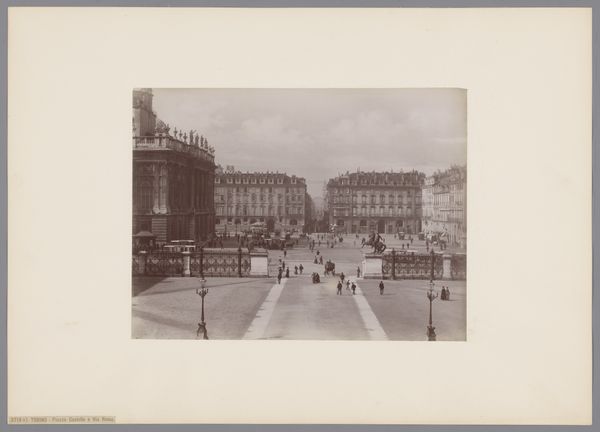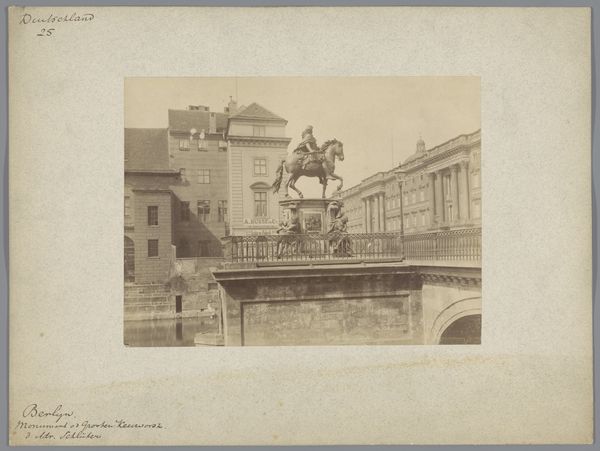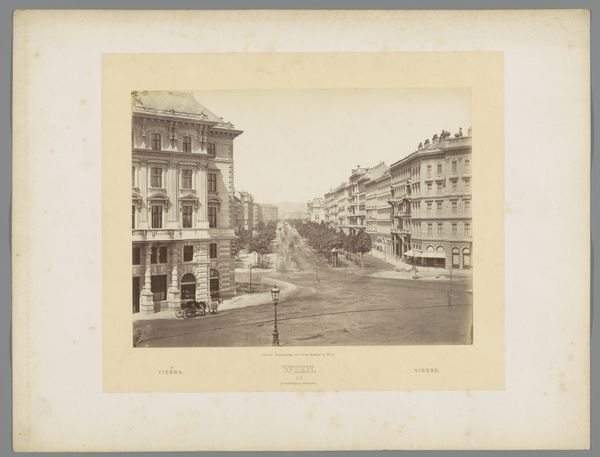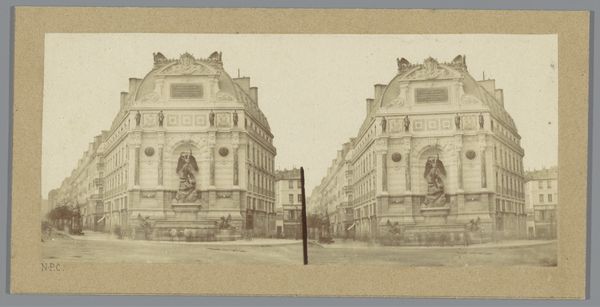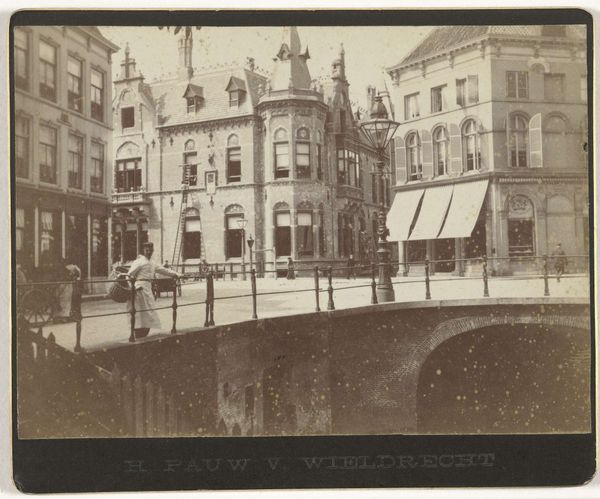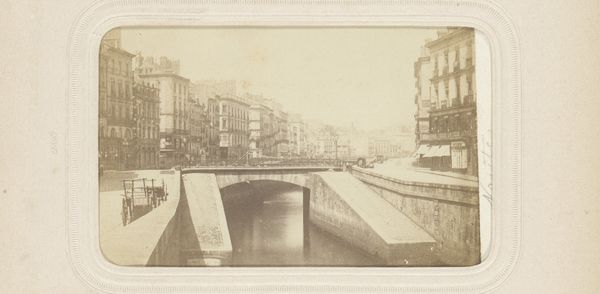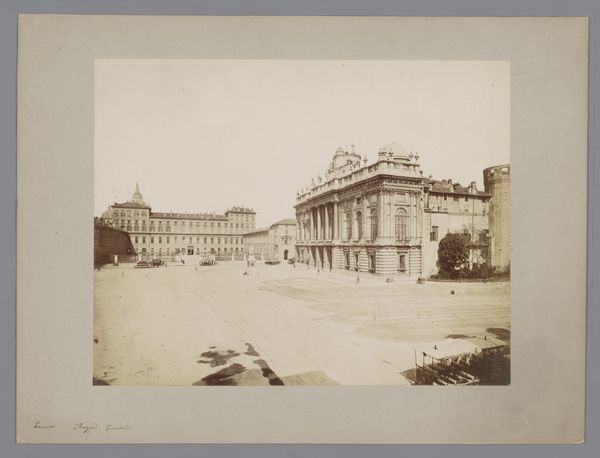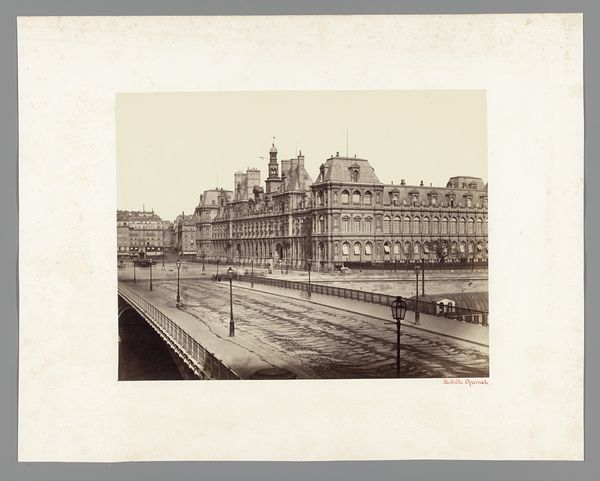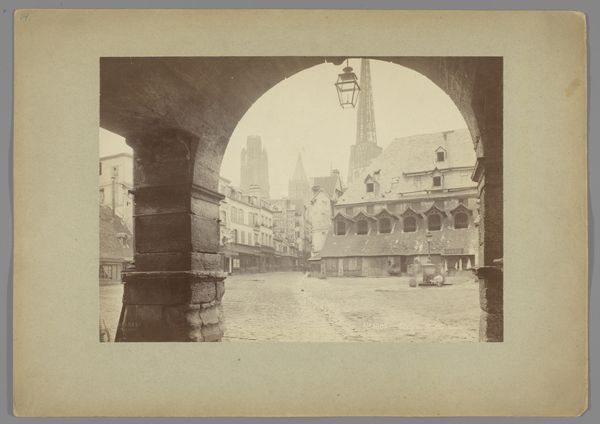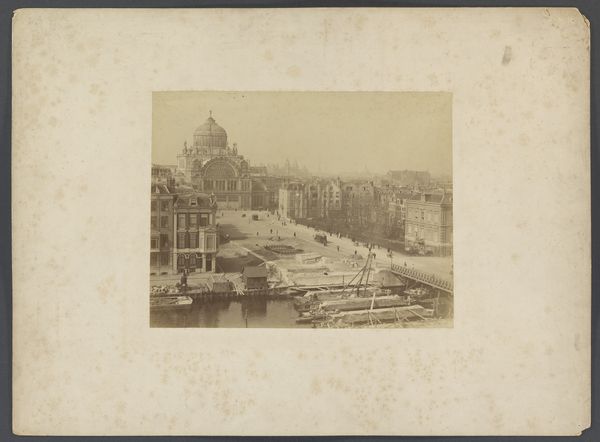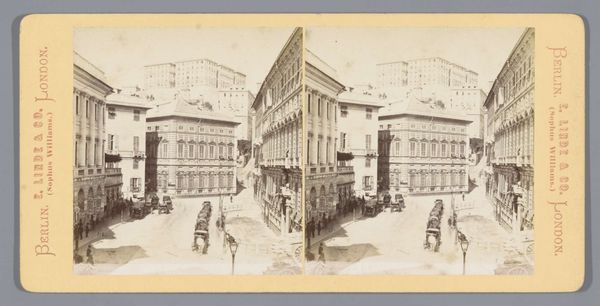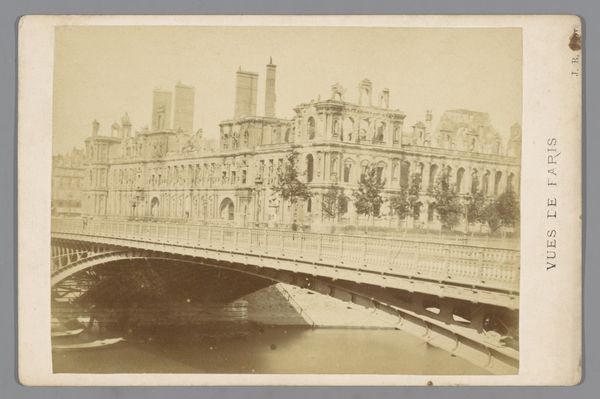
photography, albumen-print
#
portrait
#
vienna-secession
#
photography
#
cityscape
#
albumen-print
#
realism
Dimensions: height 65 mm, width 110 mm
Copyright: Rijks Museum: Open Domain
Curator: Welcome! We're looking at a photograph titled "Elisabethbrug, Wenen" created sometime between 1864 and 1885. It is an albumen print by I.C. Steuer, showing a cityscape in Vienna. Editor: The stillness is striking. Even with implied movement of the city, there's a composed serenity due to the linear arrangement of the bridge and buildings. It almost feels staged, like a backdrop, were it not for the subtle nuances in tone. Curator: Indeed. It's interesting to consider what "staging" meant during that time. Vienna was rapidly modernizing, and these albumen prints were ways of capturing, and perhaps even constructing, an image of imperial power and progress for the public. The Elisabeth Bridge wasn't just infrastructure. It became a symbol of Vienna’s grand transformation, of the shift from the old city enclosed by walls, into a modern metropolis. Editor: Note also how Steuer manipulates perspective. The bridge dominates the foreground, and while it leads the eye into the distance, it's also a firm, unwavering horizontal. A series of statues line the structure; their stoicism echoing both the grandeur of classical sculpture, as well as the ambition of burgeoning empire building. Curator: Absolutely. Look at those buildings behind the statues—the architecture itself, seemingly in dialogue with the bridge, asserts authority, echoing imperial assertions and values. I'd add, though, it’s vital to acknowledge the exclusions inherent in that "progress"—the working-class communities displaced, the social inequalities amplified by modernization...These photographs often mask such realities. Editor: But is it not compelling how the muted sepia tones almost abstract these imposing edifices? It draws attention to their shapes, emphasizing volume and dimension. Curator: That tension between aesthetic admiration and socio-political awareness is crucial. I am just reminded of Walter Benjamin’s "The Work of Art in the Age of Mechanical Reproduction". His theory highlights how the technological reproduction alters how art reflects social power, class, and inequality. It is like looking back through layers of cultural bias to get a better picture of what it was really like then for those on the periphery. Editor: A provocative thought to end with. I leave our listeners now with both the form and content lingering, perhaps to spur introspection about the complexities art reveals about our society. Curator: An incisive way to look back and encourage forward thought and discussion, certainly. Thank you.
Comments
No comments
Be the first to comment and join the conversation on the ultimate creative platform.
